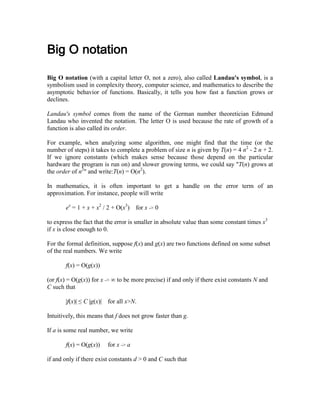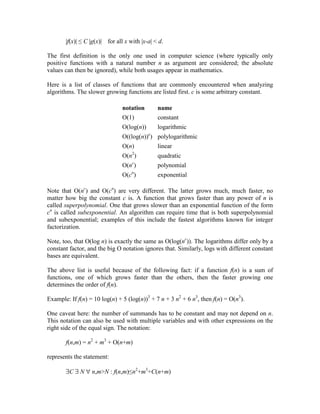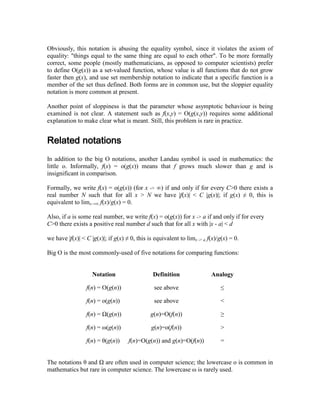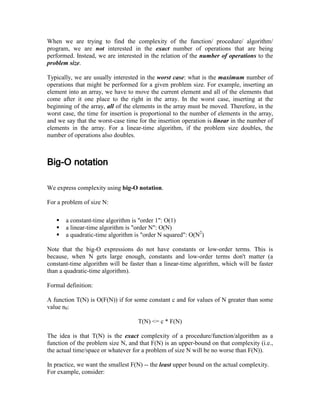Big O notation describes how efficiently an algorithm or function grows as the input size increases. It focuses on the worst-case scenario and ignores constant factors. Common time complexities include O(1) for constant time, O(n) for linear time, and O(n^2) for quadratic time. To determine an algorithm's complexity, its operations are analyzed, such as the number of statements, loops, and function calls.








